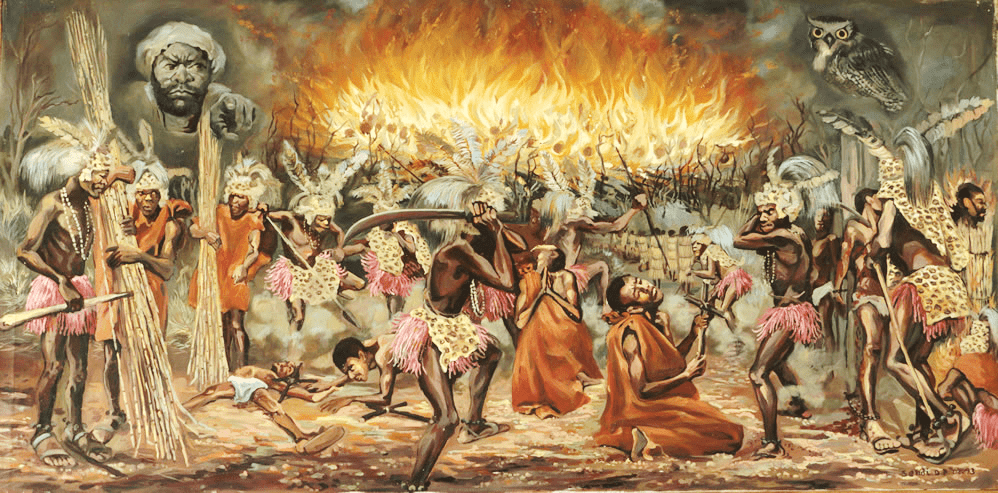
The Namugongo Uganda Martyrs: A Testament of Faith & Courage
The story of the Uganda Martyrs stands as one of the most profound testimonies of faith, courage, and sacrifice in African Christian history. Between 1885 and 1887, under the reign of Kabaka Mwanga II of Buganda, twenty-two young men and boys were brutally executed for their Christian faith at Namugongo, a site that has since become one of Africa’s most significant pilgrimage destinations. Their martyrdom marked a pivotal moment in Uganda’s religious history and continues to inspire millions of believers across the globe.
Historical Context: Uganda in the Late 19th Century
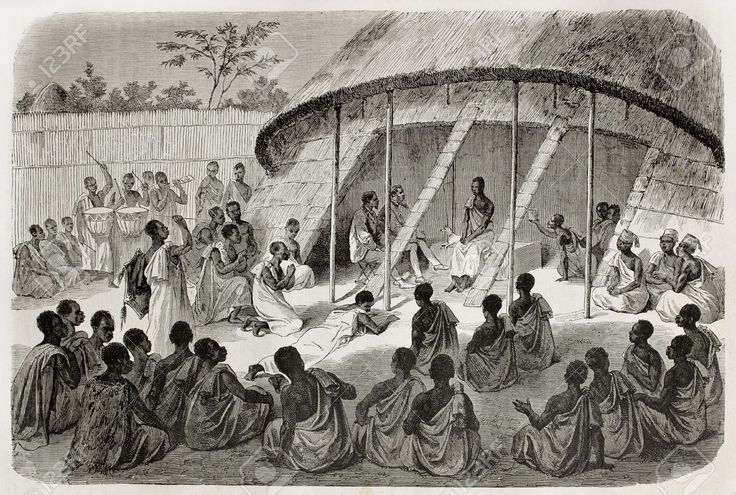
The Kingdom of Buganda
In the 1880s, the Kingdom of Buganda was the most powerful and organized state in the region that would later become Uganda. The Kabaka (king) wielded absolute authority, and the royal court at Mengo was a center of political intrigue and cultural sophistication. The kingdom had a complex social hierarchy, with the Kabaka at the apex, followed by chiefs, administrators, and common people.
The Arrival of Christianity
Christianity arrived in Buganda through two main channels. In 1877, Protestant missionaries from the Church Missionary Society (CMS), led by Alexander Mackay, established the first Christian mission. Two years later, in 1879, Catholic White Fathers missionaries, led by Father Simeon Lourdel, arrived and began their evangelical work. The introduction of these new religious ideas created a complex religious landscape alongside traditional Buganda beliefs and the already established Islamic presence.
Kabaka Mwanga II’s Rise to Power
When Kabaka Mutesa I died in 1884, his son Mwanga II ascended to the throne at approximately eighteen years of age. Unlike his father, who had been relatively tolerant of different religions, Mwanga II grew increasingly suspicious of Christian influence, viewing it as a threat to traditional Buganda customs and his absolute authority.
The Growing Tension
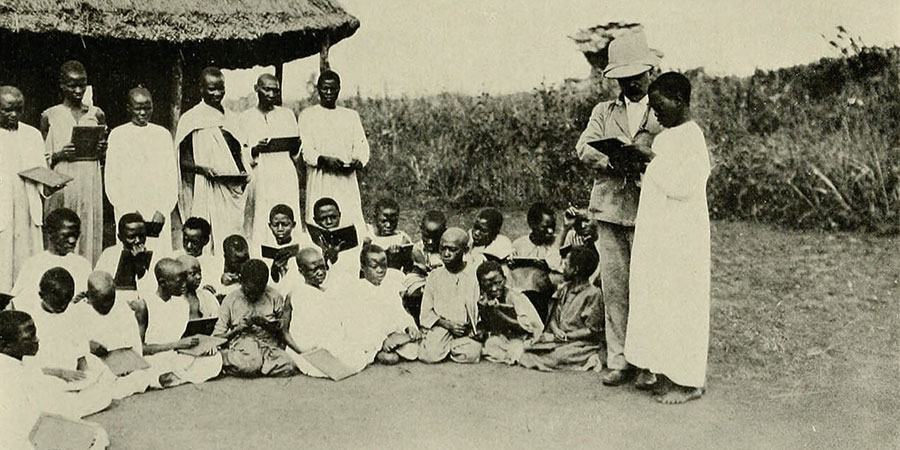
Political and Religious Factors
Several factors contributed to the mounting tension between Kabaka Mwanga and the Christian converts:
Political Concerns: Mwanga feared that Christianity would undermine the traditional basis of his authority. The Christian teaching that all people are equal before God challenged the hierarchical structure of Buganda society and the divine nature of kingship.
Cultural Conflicts: Christian converts began refusing to participate in traditional ceremonies and customs that they viewed as incompatible with their faith. This included rejecting traditional religious practices and moral codes that had long been part of Buganda culture.
Personal Grievances: Many of the young Christians in the royal court refused to comply with the Kabaka’s personal demands, particularly those of a sexual nature. The pages and servants who had converted to Christianity maintained their moral standards despite pressure from the king.
Foreign Influence: Mwanga was concerned about the growing influence of European missionaries and the potential threat of colonialism. He viewed Christianity as a precursor to foreign domination.
Early Persecution
The persecution of Christians began gradually. In October 1885, Kabaka Mwanga ordered the execution of three Christian converts, including Joseph Mukasa Balikuddembe, who served as the chief of the royal pages. Joseph had courageously confronted the Kabaka about his immoral behavior and had protected the younger pages from the king’s advances.
The Great Persecution of 1886
The Catalyst
The situation reached a critical point in May 1886 when several Christian pages refused to comply with the Kabaka’s summons for immoral purposes. Led by Charles Lwanga, who had succeeded Joseph Mukasa as chief of the pages, these young men chose to face death rather than compromise their faith.
The Arrests and Trial
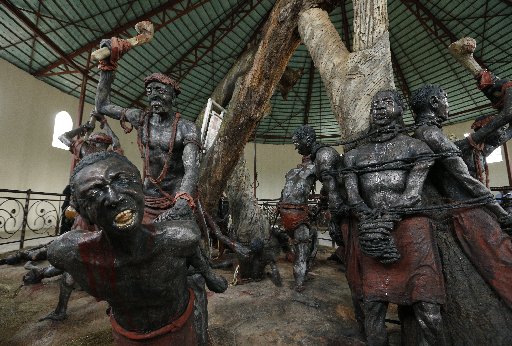
On May 25, 1886, Kabaka Mwanga ordered the arrest of all Christians in his court. The accused were brought before him and given a final opportunity to renounce their faith. When they refused, they were condemned to death. The condemned included both Catholics and Protestants, ranging in age from young teenagers to adults in their twenties.
The Journey to Namugongo
The condemned Christians were bound and forced to march approximately 37 kilometers from the royal capital at Mengo to the traditional execution site at Namugongo. This journey took several days, during which the martyrs were subjected to various tortures and humiliations. Despite their suffering, historical accounts describe them as remaining steadfast in their faith, praying, singing hymns, and encouraging one another.
The Martyrdom at Namugongo
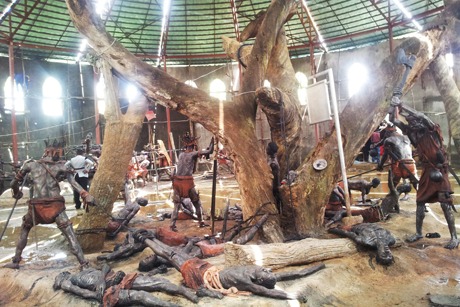
The Execution Site
Namugongo was the traditional execution ground for the Kingdom of Buganda, located in what is now Wakiso District. The site was chosen for its distance from the capital, ensuring that executions would not pollute the royal residence, and its accessibility for public witnessing of royal justice.
The Method of Execution
The martyrs were executed by being burned alive, a method traditionally reserved for the most serious crimes against the kingdom. They were wrapped in reed mats and bark cloth, then placed on a pyre of wood and grass. Historical accounts describe how they faced their deaths with remarkable courage and serenity.
June 3, 1886: The Day of Martyrdom
On June 3, 1886, thirteen of the condemned Christians were burned to death at Namugongo. This date is now commemorated annually as Martyrs’ Day in Uganda. The youngest victim was Kizito, who was only about 14 years old, while the oldest was around 25.
The Individual Martyrs
Charles Lwanga
Charles Lwanga emerged as the leader of the group. Originally a traditional religionist who later converted to Catholicism, he served as the chief of the royal pages. His leadership, courage, and faith inspired the younger martyrs throughout their ordeal.
Kizito
At approximately 14 years old, Kizito was the youngest of the martyrs. His youth and joyful acceptance of martyrdom particularly moved witnesses and have made him a beloved figure in Ugandan Christian tradition.
Other Notable Martyrs
Each of the twenty-two martyrs has their own story of conversion, faith, and courage. They came from various backgrounds and social positions within the kingdom, united only by their shared Christian faith and willingness to die for it.
The Aftermath and Impact
Immediate Consequences
Rather than eliminating Christianity from Buganda, the martyrdom had the opposite effect. The courage and faith displayed by the martyrs inspired many others to convert to Christianity. The persecution continued sporadically, but the Christian community continued to grow underground.
Long-term Effects on Uganda
The martyrdom of the Uganda Martyrs had profound long-term effects on the country:
Religious Growth: Christianity experienced explosive growth following the martyrdom, with both Catholic and Protestant communities expanding rapidly.
Educational Development: Christian missions established schools and educational institutions that became the foundation of modern education in Uganda.
Social Change: Christian values contributed to significant social changes, including the abolition of certain traditional practices and the promotion of human dignity.
National Identity: The martyrs became symbols of Ugandan courage and faith, contributing to the development of national identity.
Canonization and Recognition Of Martyrs
Catholic Canonization
Pope Paul VI canonized the twenty-two Catholic martyrs on October 18, 1964, making them the first African saints in the modern era. Their canonization was a significant moment for African Christianity, demonstrating that holiness and martyrdom were not limited to European or Middle Eastern contexts.
Anglican Recognition
The Anglican Church also recognizes the Protestant martyrs, commemorating them in their liturgical calendar and honoring their sacrifice as examples of faithful witness.
Ecumenical Significance
The Uganda Martyrs represent one of the finest examples of Christian unity, as both Catholic and Protestant believers died together for their shared faith in Jesus Christ, transcending denominational boundaries.
Namugongo Today
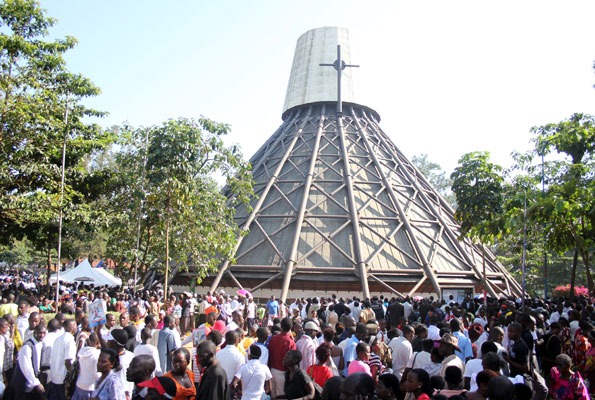
The Shrine
The site of the martyrdom has been developed into two major shrines:
Catholic Martyrs’ Shrine: Built on the exact spot where the Catholic martyrs were burned, this shrine attracts millions of pilgrims annually. The centerpiece is a circular church designed to accommodate large congregations.
Anglican Martyrs’ Shrine: Located nearby, this shrine honors the Protestant martyrs and serves as a center for Anglican pilgrimage and worship.
Annual Pilgrimage
Every June 3rd, millions of pilgrims from across East Africa and beyond converge on Namugongo to commemorate Martyrs’ Day. This has become the largest religious gathering in East Africa, with people walking hundreds of kilometers to reach the shrine.
Cultural and Economic Impact
The annual pilgrimage has significant cultural and economic impacts:
Tourism: Namugongo has become a major religious tourism destination, contributing to the local and national economy.
Cultural Exchange: The pilgrimage brings together people from diverse backgrounds, promoting cultural exchange and unity.
Infrastructure Development: The site’s popularity has led to the improvement of roads, accommodation facilities, and other infrastructure in the area.
Theological and Spiritual Significance
Martyrdom in Christian Tradition
The Uganda Martyrs stand in the great tradition of Christian martyrs, following the example of Jesus Christ and the early Christian martyrs. Their witness demonstrates several key theological themes:
Fidelity to Faith: Their willingness to die rather than renounce their faith exemplifies the ultimate commitment to Christian belief.
Moral Courage: Their refusal to compromise their moral principles, even under threat of death, provides a powerful example of Christian integrity.
Unity in Diversity: The fact that both Catholics and Protestants died together highlights the fundamental unity of Christian faith beyond denominational differences.
Lessons for Contemporary Christianity
The example of the Uganda Martyrs offers several lessons for contemporary Christians:
Courage in the Face of Persecution: Their example encourages Christians facing persecution today to remain steadfast in their faith.
Moral Integrity: Their refusal to compromise their moral principles provides guidance for Christians facing ethical dilemmas.
Youth Leadership: The prominent role of young people among the martyrs highlights the importance of youth in Christian witness.
Inculturation: Their ability to embrace Christianity while maintaining their African identity demonstrates the possibility of authentic Christian inculturation.
Global Recognition and Influence Of Martyrs
International Recognition
The Uganda Martyrs are recognized internationally as examples of Christian witness and courage. They are commemorated in various Christian calendars worldwide and have inspired Christians in other contexts facing persecution.
Influence on African Christianity
The martyrs have had a profound influence on the development of Christianity throughout Africa:
Indigenous Sanctity: They demonstrated that holiness and martyrdom were possible within African contexts, encouraging the development of indigenous African Christianity.
Missionary Inspiration: Their example inspired both African and foreign missionaries to continue evangelization efforts despite persecution.
Theological Development: Their witness has contributed to the development of African Christian theology, particularly in areas of suffering, persecution, and martyrdom.
Contemporary Relevance
Modern Persecution
The example of the Uganda Martyrs remains relevant in contemporary contexts where Christians face persecution. Their witness provides encouragement and guidance for believers facing similar challenges today.
Social Justice
The martyrs’ stand against injustice and their willingness to speak truth to power resonates with contemporary struggles for social justice and human rights.
Interfaith Relations
Their story provides lessons for interfaith dialogue and the importance of religious freedom and tolerance in pluralistic societies.
Youth Evangelization
The prominent role of young people among the martyrs provides inspiration for contemporary youth evangelization and the importance of involving young people in church leadership.
Conclusion
The Uganda Martyrs at Namugongo represent one of the most significant events in the history of African Christianity. Their witness to faith, courage in the face of persecution, and willingness to die for their beliefs continue to inspire millions of Christians worldwide. Their martyrdom not only transformed Uganda but also contributed to the global understanding of Christian witness and the universality of the Gospel message.
The annual pilgrimage to Namugongo serves as a powerful reminder of their sacrifice and continues to strengthen the faith of countless believers. Their canonization by the Catholic Church and recognition by the Anglican Communion demonstrate the ecumenical significance of their witness.
As we remember the Uganda Martyrs, we are reminded that faith often requires sacrifice, that truth sometimes demands courage, and that the Gospel message transcends cultural, racial, and denominational boundaries. Their legacy continues to challenge contemporary Christians to live lives of integrity, courage, and unwavering faith in the face of whatever challenges they may encounter.
The story of the Uganda Martyrs is not merely a historical account but a living testimony that continues to shape the Christian faith in Africa and beyond. Their example reminds us that ordinary people, when filled with extraordinary faith, can change the course of history and leave a legacy that endures for generations.
Planning to visit the Namugongo Shrine on June 3rd or any other day and would love to travel privately in a rental car- we at Rent A Driver Uganda organize affordable 1-day Kampala city tour packages that include visiting Buganda Kingdom’s top tourist attractions & historic sites, including the Namugongo martyrs shrine. Contact us today by sending an email to info@rentadriveruganda.com or call us now on +256-700135510 to speak with the reservations team.


